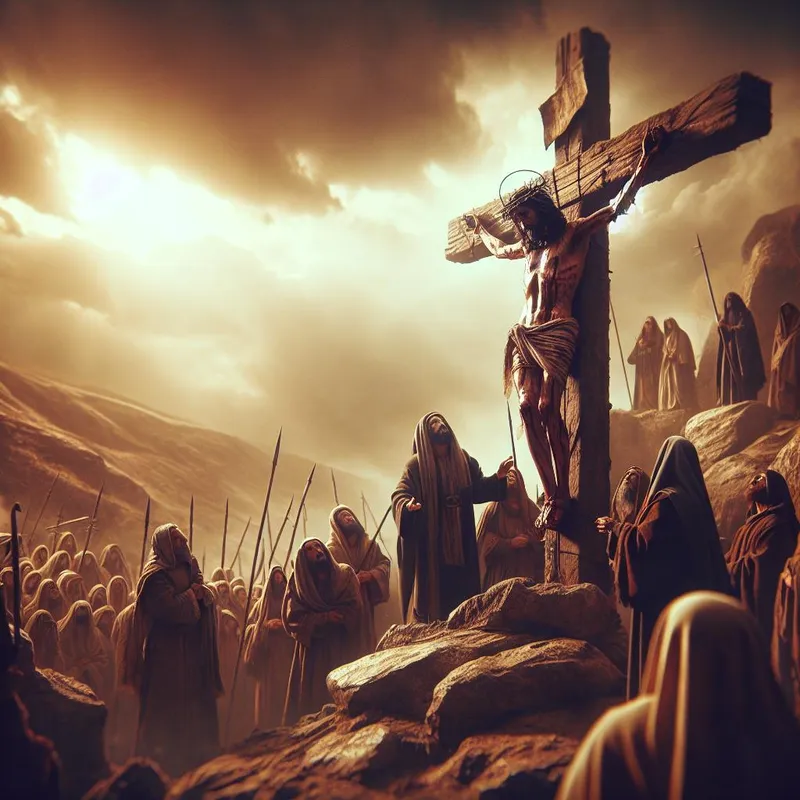
'When Was Jesus Crucified: Revealing the Sacred Hour'
Posted on 08 May 2024
What Time Was Jesus Crucified?
The timing of Jesus' crucifixion is a topic that has been examined by scholars and theologians, as the gospel accounts provide various references to the time of day. By considering all the information provided by the gospel writers, we can gain an understanding of when Jesus was crucified.
1. Arrest and Morning Proceedings
According to Matthew 27:1–2, Jesus was arrested at night and brought before the chief priests and elders of the people on the following morning. They bound Him and delivered Him to Pilate, the governor. This sets the stage for the events leading up to Jesus' crucifixion.
2. Hearings Before Pilate and Herod
After being brought before Pilate, there were a series of hearings involving both Pilate and Herod. Luke 23:6–15 mentions Herod's involvement, as he was in Jerusalem for the Passover. However, Pilate had the final decision-making authority. Although Pilate initially wanted to release Jesus (Luke 23:20), he ultimately chose to appease the crowd. In Matthew 27:24–26, we see that Pilate handed Jesus over to be crucified after having Him scourged.
3. The Time Clues in Matthew
Matthew provides some clues about the time of Jesus' crucifixion. In Matthew 27:45–51, it is stated that darkness fell upon all the land from about the sixth hour until the ninth hour. It was during this time that Jesus cried out with a loud voice and yielded up His spirit. Therefore, according to Matthew, Jesus died "about the ninth hour."
4. Agreement Among the Synoptic Gospels
Luke 23:44–47 agrees with Matthew's account of darkness from the sixth hour until the ninth hour and Jesus' death around that time. Mark 15:25 adds further information, stating that Jesus was crucified at the third hour. The rest of Mark's account aligns with Matthew and Luke in terms of the times of darkness and Jesus' death.
5. Reckoning Time in Ancient Times
It is important to understand that ancient timekeeping methods were imprecise compared to modern standards. Before the use of watches and precise timekeeping devices, people would often estimate and round off the time. The day was typically divided into three-hour blocks, and individuals would estimate the time based on their observations. Therefore, when different observers glanced up at the sun moving toward mid-heaven, one might have considered it the third hour while another might have called it about the sixth hour.
6. John's Unique Perspective
John's account in John 19:13–14 seems to differ from the other gospel writers regarding the timing of certain events. John places the hearing before Pilate at about the sixth hour, which conflicts with Mark's account of Jesus' crucifixion at the third hour. Various solutions have been proposed to reconcile this discrepancy.
One solution suggests that John may be using a different method of time reckoning that counts hours from midnight (the "Roman" method). However, this is unlikely since John's other time references align with the traditional sunup-to-sundown frame of reference. Another proposed solution is to attribute John's mention of the sixth hour to a scribal error, but there is no manuscript evidence to support this theory. Some scholars suggest that John may be making a theological point rather than providing a literal indication of time.
7. Theological Implications
While determining the exact timing of Jesus' crucifixion may be challenging due to imprecise ancient timekeeping methods and differing perspectives among the gospel writers, it is crucial to recognize that the gospel accounts focus more on theological implications than precise chronology. The writers were primarily concerned with conveying the significance of Jesus' death and its fulfillment of Old Testament prophecies.
Why This Matters
Understanding the timing of Jesus' crucifixion can deepen our appreciation for the events that unfolded on that pivotal day. It allows us to reflect on the significance of Jesus' sacrifice and His willingness to endure suffering for our sake. By exploring the different perspectives presented in the gospel accounts, we can gain a more comprehensive understanding of the narrative and its theological implications.
Think About It
Consider the varying perspectives presented in the gospel accounts regarding the timing of Jesus' crucifixion. How does this remind you of the uniqueness and diversity of the four gospel narratives? Reflect on the theological significance of Jesus' sacrifice and how it impacts your own faith journey.
